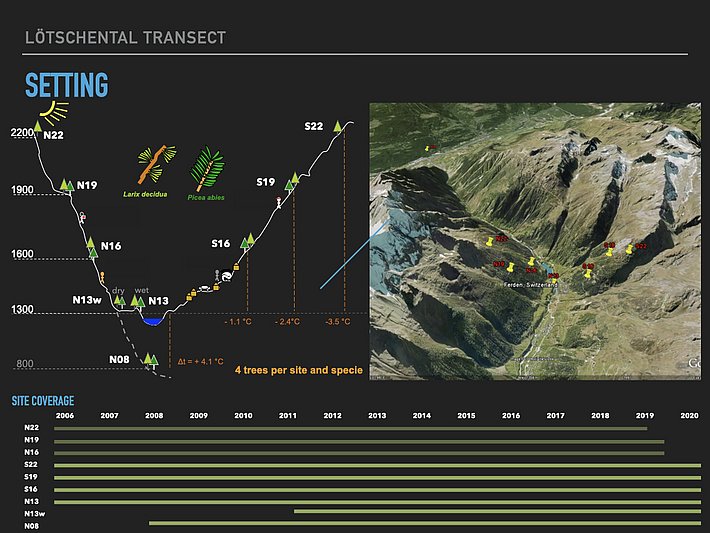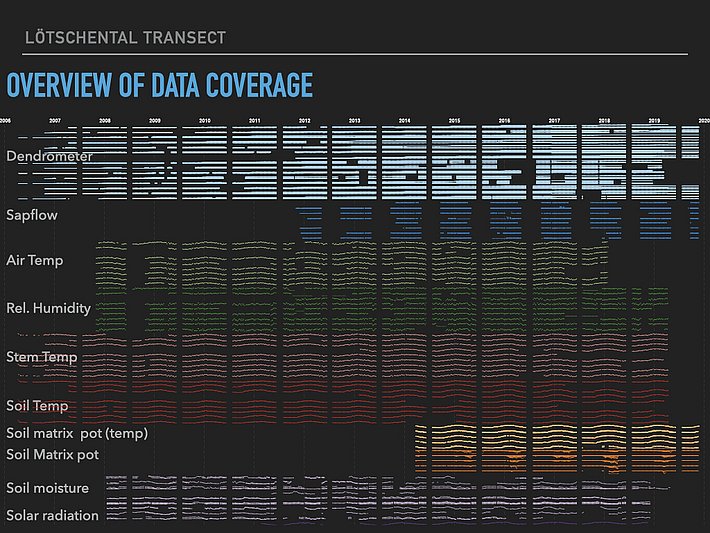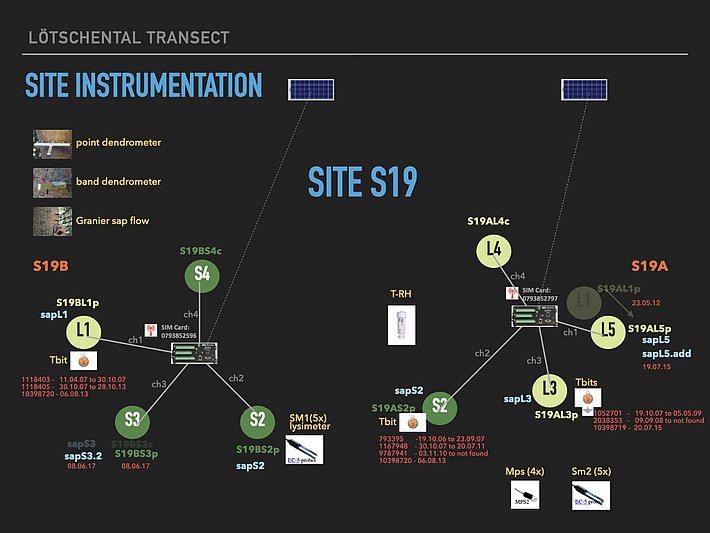What happens behind trees’ bark and how does this process interact with climate change?
Contents ¶
The role of plant growth ¶
The growth of plants plays a major role for life on Earth. It is the main process that generates biomass (net primary productivity). Growth influences the global carbon, water and energy cycles via the chemical reactions involved, which eventually affect the climate system. Wood, which is the product of secondary tree growth, is the main terrestrial biotic reservoir for long-term carbon sequestration, its formation consuming around 15 % of anthropogenic carbon dioxide emission each year. From the plants’ perspective, the woody structures facilitate water and nutrients transport, provide mechanical support and storage for carbohydrates, as well as water and defense compounds, allowing trees to correctly function within the range of local climate variability. Deeper understanding of intra-annual tree growth is key for addressing pressing research questions related to the short- and long-term impact of climate change (including extremes) on forest growth, vegetation dynamics and climate. Sound predictions of how growth will respond to climate change are therefore crucial.
The cambium "inside-out" ¶
However, hidden behind the bark, the thin layer of actively dividing cells called “cambium” cannot be easily observed. This is where the seasonal dynamics of woody biomass production takes place. Therefore, our understanding of this key component of the carbon cycle, its sensitivity to climate, and its influence on the functioning, resilience and species distribution of trees remains very limited.
The study of xylogenesis, i.e. the process of xylem formation carried out by woody plants (see Rathgeber et al. 2016 for a crash course), allows to virtually turn the inner bark surface outwards and observe the formation of both xylem and phloem. Studying these processes taking place in tree stems in relation to the simultaneously occurring environmental conditions allows for fine-scale investigations of plant response to environmental variation. This has direct implications for regional climate, carbon uptake, biodiversity, and society.
Observing to understand and predict ¶
Monitoring tells us what is happening, research tells why something is happening, and modeling helps to tell us what can happen. The Lötschental is the ideal research setting to combine the three approaches around this fundamental and environmentally sensitive process of “secondary growth”.
The short film gives a fascinating insight int the natural museum the Lötschental is and illustrates our methods in trying to understand the wooden witnesses of the past.
The Lötschental tree-growth monitoring Transect ¶
In order to further understand and perhaps predict the effects of the projected temperature increase in forest ecosystems, the Dendrosciences group of the WSL is monitoring forest growth along both the south and north facing slopes of the Lötschental valley. The Lötschental monitoring transect is an ensemble of 9 tree-growth monitoring sites distributed along an elevational gradient from 800 to 2200 m. a.s.l. The setting (Figure 2) was installed in fall 2006 and includes infrastructure to investigate continuous stem growth of mature Picea abies and Larix decidua trees grown under natural conditions. The originality of the setting relies on long-term monitoring of xylogenesis (wood formation) by means of weekly stem tissue sampling (Figure 3), in parallel with sub-hourly measurements of radial growth, sap flow, air and soil temperature, relative humidity, soil water content, soil matrix potential, and solar radiation at each site (Figure 4). These data have occasionally been complemented with additional measurements to characterize isotope signals in soil and tree compartments, tree phenology, the dynamics of non-structural carbohydrates in the cambium, trees’ genomic DNA, and tree-ring width and wood anatomy.



Contribution and outputs ¶
The project has a modular and open structure. This means that there is a given general setting (site selection and basic measurements such as ground temperature) to which other specific research questions can be added. The project started in 2007 and is still ongoing. Since its installation, the tree-ring transect has contributed to numerous scientific publications (see publication list below) that address research questions on various aspects of the tree growth process.
